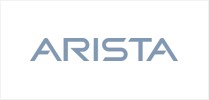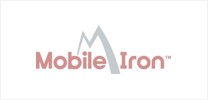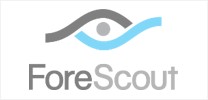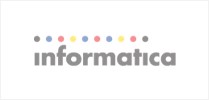As the CFO of a SaaS company, your role is INSTRUMENTAL in driving financial success for your organization.
However, with the ever-increasing complexity of modern businesses, CFOs need to leverage cutting-edge technology to stay ahead of the curve.
Join us as we dive into accounting AI and discover how it can revolutionize your department.
In this article, we’ll explore the following:
The role of SaaS CFOs in modern businesses
How AI is revolutionizing SaaS accounting and finance
The adoption of AI by SaaS CFOs
Generating organizational support for SaaS accounting AI
Final thoughts
AI
Discover how to use AI to make smarter, faster decisions, get a dynamic, real-time view of your business performance, and access actionable insights. Learn more about AI
The role of SaaS CFOs in modern businesses
Traditionally, the role of CFO has often been viewed strictly in technical and financial light.
The CFO and finance department supplied critical data for other departments’ strategizing but didn’t frequently step into the strategic process.
These days, that’s no longer the case. How is your role viewed now?
The growing importance of SaaS CFOs
In today’s SaaS landscape, CFOs drive revenue growth and operational efficiency.
You’re responsible for:
- Creating pricing models that maximize recurring revenue.
- Ensuring compliance and overseeing revenue recognition.
- Creating budgets that facilitate organizational success.
- Helping your company scale seamlessly and much more.
Your role has active strategic value. Here are some specific ways that SaaS CFOs contribute to organizational profitability.
How do SaaS CFOs drive cash flow?
SaaS CFOs have a wide range of responsibilities, but they all have the common goal of driving cash flow.
Below, we examine two ways software organizations count on their finance leaders to keep the revenue flowing.
1. SaaS CFOs promote financial visibility.
Cash flow visibility is at the heart of any organization’s financial success.
CFOs play an outsize role in that. SaaS companies can’t use their resources optimally without granularly tracking cash coming in and cash going out.
But financial visibility means more than just managing cash inflows and outflows.
Having a full 360-degree view of your financial past and future is also pivotally important.
You promote financial visibility when you optimize your company’s financial reporting and forecasting, which of course go hand in hand.
SaaS CFOs track their company’s historical financial data through meticulous reporting.
Then, they use that data to provide forward-looking visibility. “What’s likely to happen if our company does X, Y, or Z? What will the consequences be for our revenue and churn levels?”
By prioritizing maximum financial visibility in all directions, you can set your company on a market-winning path.
2. SaaS CFOs drive technological innovation.
The enterprise technology available to SaaS companies has grown exponentially. Cloud financial management is enabling SaaS companies to achieve more with less, save cash, and maximize their human capital.
Companies need an enterprising, modern CFO to nudge them in that direction.
Inertia is powerful, and once your company gets used to legacy tools, it can be hard to turn that battleship around. Unfortunately, this keeps companies from reaching their true potential.
As a finance leader, it’s up to you to ensure your department runs as efficiently and effectively as possible.
That might mean taking an honest look at accounting automation.
Now, we’ll discuss the impact that AI is having in SaaS accounting departments and how it augments the CFO’s role.
How AI is revolutionizing SaaS accounting and finance
AI is a game-changer for SaaS finance and accounting.
The fast-paced nature and high transaction volumes the SaaS industry is known for make it a particularly strong candidate for accounting automation.
The intersection of AI and SaaS accounting
Many SaaS accounting tasks are tedious and repetitive but very important.
Examples include assembling reports and forecasts, payables and receivables workflows, revenue recognition, and other business activities.
These are all significant use cases for automation because:
- They’re prone to potentially serious employee errors.
- They contribute to your strategies but aren’t inherently strategic.
- Offloading these tasks frees you up for work that impacts your bottom line.
What results can SaaS CFOs expect when they leap to accounting AI?
The impact of AI on finance operations
Cloud accounting software with AI enables SaaS finance leaders to streamline their day-to-day workflows for optimal efficiency.
CFOs who embrace automation benefit by:
- Unlocking the power of algorithmic forecasting: Automated SaaS forecasts are assembled with financial models created by machine learning and GenAI technology. This allows them to change in real-time to match your surrounding financial environment.
- Centralizing SaaS finance and accounting data: Cloud accounting puts all your company’s data in one central location. Data centralization ends revenue leakage by making it simple to comply with the industry’s revenue recognition standard. Centralization also streamlines your SaaS budgeting, facilitates real-time strategic collaboration, and more.
- Accessing real-time SaaS metrics updates: One of the largest problems with legacy reporting is that it frequently introduces large data lag. This can interfere with the amount of revenue you’re able to generate. With automation, SaaS companies’ key performance indicators (KPIs) are always up-to-date and of full strategic value. Instantly view your ARR, MRR, churn, and many other metrics.
Here are a few examples of how SaaS CFOs leverage this technology in their departments.
Are You Ready to Be a Data-Driven CFO?
Download this infographic to explore our survey results and see insights you can use on your journey to become a data-driven CFO.

The adoption of AI by SaaS CFOs
AI’s influence on SaaS finance and accounting is wide-ranging.
Finance leaders are using it to improve their effectiveness at board meetings, easily digest large volumes of data, and more.
How are leading CFOs utilizing AI in their operations?
AI and its recent counterpart, GenAI, are making SaaS CFOs’ lives easier in many ways.
Below are three AI advantages we haven’t touched on yet.
- Role-based dashboards: In a legacy accounting department, hunting down all necessary data can be extremely frustrating. Accounting software with AI features role-based dashboards that contain all the metrics and data specific leaders at your company need.
- Automated board packs: Presenting to your board can be a stressful experience. AI can help. Automated accounting software can automatically create and distribute crystal-clear board packs and even assist CFOs with financial storytelling techniques during board presentations.
- SaaS billing and pricing forecasts: Traditionally, finding the SaaS billing “sweet spot” for a given company is an intensely laborious. The finance team runs forecasts on one subscription model after the next, comparing the long-range effects of each one. Automated forecasts make it easy to compare billing decisions and their outcomes rapidly.
AI can even help you future-proof your SaaS organization.
Future-proofing your company with accounting AI
For a SaaS business that sells subscription services, setting yourself up for the future is especially critical.
AI can help growing SaaS companies maintain their momentum at scale, allowing them to focus on the present instead of fretting over the future.
AI eliminates SaaS finance growing pains.
Scaling the SaaS finance function can be tremendously difficult.
Between monitoring your revenue streams, tracking every performance obligation, and keeping up with essential metrics, growth is challenging to manage.
That’s because human employees only have so much bandwidth. Their minds wander, they get tired, they make mistakes. AI never gets tired, and it can easily handle workloads that a team of employees would strain under.
Let the software handle the increased accounting workload so you and your team can make the strategic contributions that really count.
Never miss a regulatory update again.
Cloud accounting software automates compliance monitoring, ensuring timely implementation of updates and providing real-time alerts for changes that impact your company.
If you manually manage compliance, you could be fined for violating updates you didn’t even know about.
Regulatory fines can be quite sizable depending on the severity of your violation, taking a big bite out of your available resources.
Generating organizational support for SaaS accounting AI
As a CFO, it’s up to you to lead the charge for SaaS finance automation at your company.
Not everyone might see the benefits as clearly as you do, and some people might even be afraid of this new technology for various reasons–fears of job loss, or maybe the safety of the data migration process.
It’s up to you to educate others at your company on the benefits of accounting AI.
How do you get stakeholder buy-in?
To generate stakeholder support for automation, it’s important to assure others at your company of three fundamental points.
- AI will not render employees obsolete: AI is extremely good at handling repetitive tasks. In the case of GenAI, it can even create accurate human-like content. But you still need your employees for the strategic work that drives revenue and for signing off on the tasks that AI accomplishes.
- The data migration process for AI is secure: If you do your due diligence and select a reputable software vendor, you won’t have to worry about the migration process whatsoever. A dedicated account representative will work with your company every step of the way to get you up and running with AI.
- The strategic benefits outweigh the minor risks: There are minor risks to AI, such as jumping in before you have sufficient volumes of training data. However, for most companies, the operational benefits of automation far outweigh the minor logistical risks associated with these tools.
In order for your organization to reap all the benefits of AI, it’s important for people to be on the same page.
Final thoughts
Revolutionize your department with AI
AI has the power to transform the way your department does business.
From SaaS metrics integration to role-based dashboards and centralized revenue recognition, the advantages over legacy accounting are hard to ignore.
Whether you’re forecasting different growth strategies, analyzing your key metrics, or trying to optimize your cash management, automation can help.
Your role as a CFO entails many responsibilities, and AI facilitates high performance across the board. To learn more about why SaaS CFOs are crucial to their companies and the role AI plays in their success.























